Wind Energy vs Solar Energy Comparison: Science & Innovation
Category: Renewable Energy
Wind Energy vs Solar Energy: Which Renewable Power Reigns?
If you’re here, you’re likely curious about how wind energy stacks up against solar energy—not just at a surface level but from a scientific and technological standpoint. Whether you’re a beginner eager to grasp the basics or an electrical engineer looking for a deep dive into the innovations shaping these renewable powerhouses, this post has you covered. Many resources offer generic comparisons, but they often fall short on explaining the underlying physics, system architectures, and technological advancements that define efficiency, reliability, and scalability across varying environments. Your pain point might be confusion about which technology fits specific applications better, or how emerging innovations might shift that balance in the near future.
You may have landed here after sifting through conflicting articles or struggling to translate technical jargon into practical knowledge. This post cuts through the noise by breaking down the core principles of wind and solar technologies, analyzing their strengths and limitations with data-driven insights, and discussing the latest trends that impact engineering decisions. By the end, you’ll not only understand the ‘what’ but the ‘why’ behind performance differences, helping you make informed choices for projects, research, or general knowledge. Join us as we explore the remarkable science and innovation driving wind and solar energy forward in the renewable revolution.
- Wind Energy vs Solar Energy: Which Renewable Power Reigns?
- Fundamentals of Wind Energy: Physics, Wind Patterns, and Turbine Design
- Fundamentals of Solar Energy: Photovoltaics, Solar Radiation, and Panel Technology
- Energy Conversion Efficiency: Comparing Wind Turbines and Solar Panels
- Cost Analysis and Economic Viability: Wind Energy vs Solar Energy
- Environmental Impact and Land Use Considerations: Wind Energy vs Solar Energy
- Grid Integration Challenges and Energy Storage Solutions
- Technological Innovations Driving Future Prospects
- Applications and Suitability: From Distributed Systems to Utility-Scale
- Regional and Climatic Influences on Performance and Deployment
- Policy, Incentives, and Market Trends Influencing Adoption
Fundamentals of Wind Energy: Physics, Wind Patterns, and Turbine Design
Understanding the science behind wind energy starts with the basic physics of how moving air generates usable power. Wind energy harnesses the kinetic energy of moving air molecules, which is converted into mechanical energy by turbine blades and then into electrical energy via a generator. The power captured from wind depends heavily on the cube of wind speed, meaning even small increases in wind velocity dramatically boost energy output. This key relationship underscores why site selection—choosing locations with consistent, strong winds—is vital for maximizing efficiency.
Wind turbines rely on aerodynamic blade design to efficiently capture kinetic energy. The blades function much like airplane wings, using lift forces created by the wind flowing over their airfoil-shaped surfaces to rotate the rotor. Innovations in blade materials and shapes are critical for optimizing energy capture while minimizing structural stress and noise. Additionally, wind speed variability—caused by atmospheric conditions and terrain—demands that turbines incorporate robust control systems to adjust blade pitch and rotor speed dynamically, ensuring optimal performance under fluctuating wind regimes. Factors that affect wind availability include:
- Geographical location and elevation
- Terrain roughness and obstacles
- Seasonal and daily wind pattern variations
- Height of the turbine hub above the ground
By carefully analyzing wind patterns using meteorological data and employing advanced turbine designs, engineers can significantly enhance the capacity factor of wind farms, making wind energy a competitive and viable renewable resource. This interplay of physics, environment, and engineering innovation forms the foundation for understanding wind energy’s role in the renewable energy landscape.
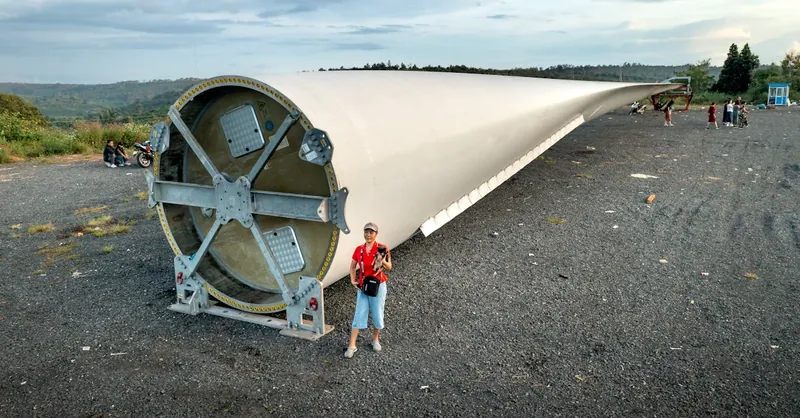
Image courtesy of Quang Nguyen Vinh
Fundamentals of Solar Energy: Photovoltaics, Solar Radiation, and Panel Technology
Solar energy harnesses the power of the sun by converting solar radiation directly into electricity using photovoltaic (PV) technology. At its core, a solar panel consists of numerous solar cells made from semiconductor materials—most commonly silicon—which absorb photons from sunlight. When these photons hit the semiconductor, they excite electrons, creating an electric current through the photovoltaic effect. This seamless conversion of light to electrical energy is the foundation of solar power generation, making it an elegant and sustainable solution.
Innovations in PV Materials and Efficiency
Over the decades, PV technology has evolved far beyond traditional silicon cells. Breakthroughs include:
- Monocrystalline and polycrystalline silicon cells: Offering high efficiency and reliability, they remain industry standards.
- Thin-film technologies: Using materials like cadmium telluride (CdTe) and copper indium gallium selenide (CIGS), these cells are lighter and flexible but generally less efficient than crystalline silicon.
- Perovskite solar cells: An emerging innovation boasting rapid efficiency improvements and potentially lower production costs, perovskites could disrupt conventional PV markets by enabling tandem cells that capture more of the solar spectrum.
Advances in anti-reflective coatings, multi-junction cells, and surface texturing further enhance light absorption and reduce losses. Additionally, smart integrations such as bifacial panels, which capture sunlight from both sides, improve energy yield especially in reflective environments.
Impact of Geographic Location and Weather on Solar Performance
While solar panels produce electricity during daylight, their output significantly varies depending on geographic location, solar irradiance, and weather conditions. Key factors include:
- Latitude and Sun Angle: Locations closer to the equator receive more intense and direct sunlight year-round, increasing overall solar potential.
- Solar Irradiance Levels: Measured in kilowatt-hours per square meter per day (kWh/m²/day), higher irradiance directly correlates with greater energy production.
- Cloud Cover and Atmospheric Conditions: Clouds reduce solar radiation reaching panels; diffuse light can still generate power but at lower efficiency.
- Temperature Effects: Surprisingly, higher temperatures can reduce panel efficiency; most PV cells operate optimally at cooler temperatures, making location-specific climate characteristics critical for system design.
Optimizing panel tilt, orientation, and incorporating tracking systems that adjust panel position throughout the day can mitigate geographic and weather-related variability, boosting the capacity factor of solar installations. Understanding these fundamentals allows engineers and beginners alike to appreciate the delicate interplay between sunlight, material science, and environmental factors that define the effectiveness of solar energy systems.
Image courtesy of Jan Van Bizar
Energy Conversion Efficiency: Comparing Wind Turbines and Solar Panels
When evaluating energy conversion efficiency, it’s essential to understand how effectively wind turbines and solar panels transform natural resources—wind and sunlight—into usable electrical power under real-world conditions. This metric profoundly influences the overall viability, cost-effectiveness, and scalability of renewable energy projects.
Typical Efficiency Ranges and Losses
-
Wind Turbines: Modern utility-scale wind turbines achieve aerodynamic efficiencies of around 40-50%, approaching the theoretical Betz limit of 59.3%. However, electrical conversion efficiencies for the generator and power electronics push overall turbine efficiency typically into the 35-45% range. Losses arise from mechanical friction, electrical resistance, and suboptimal wind speeds.
-
Solar Panels: Commercial silicon-based photovoltaic panels convert about 15-22% of the incident solar radiation into electricity. High-efficiency panels using monocrystalline cells and tandem architectures can reach over 23-25%. Losses occur due to reflection, heat, internal resistance, and imperfect photon absorption.
Capacity Factors: Real-World Energy Yield
The capacity factor—the ratio of actual energy produced over a period to the maximum possible output at continuous full power—captures how efficiently the energy source performs beyond raw conversion efficiency.
| Technology | Typical Capacity Factor | Influencing Factors |
|---|---|---|
| Wind Turbines | 25% - 45% | Wind variability, hub height, site terrain |
| Solar Panels | 10% - 25% | Sunlight availability, panel orientation, climate |
Wind farms located in consistently windy regions and equipped with taller turbines achieve higher capacity factors, sometimes exceeding 40%. Solar installations in sunnier climates with tracking systems can reach capacity factors near 25%, though generally solar’s variability is more predictable due to daily and seasonal solar patterns.
Influencing Real-World Efficiency Metrics
Several factors affect how conversion efficiencies and capacity factors translate into actual energy production:
- Environmental Conditions
- Wind Speed Fluctuations: Since wind power scales with the cube of wind speed, small drops in wind can cause large output reductions.
-
Solar Irradiance Variability: Cloud cover and atmospheric dust reduce sunlight intensity, impacting PV output proportionally.
-
Technological Enhancements
- Wind Turbine Control Systems: Adaptive blade pitch and yaw controls optimize energy capture and reduce wear in turbulent conditions.
-
Solar Tracking and Cooling: Single- and dual-axis trackers increase sunlight incidence angles, while passive or active cooling mitigates thermal efficiency losses.
-
System Losses and Maintenance
- Electrical losses during power conversion, transformer inefficiency, and downtime due to maintenance or faults reduce net output for both technologies.
Understanding these efficiency nuances enables engineers and project planners to tailor renewable energy solutions to their local environmental parameters, maximizing energy harvest and system reliability. This knowledge is crucial for advancing renewable integration and boosting the overall effectiveness of wind and solar power in the global energy mix.
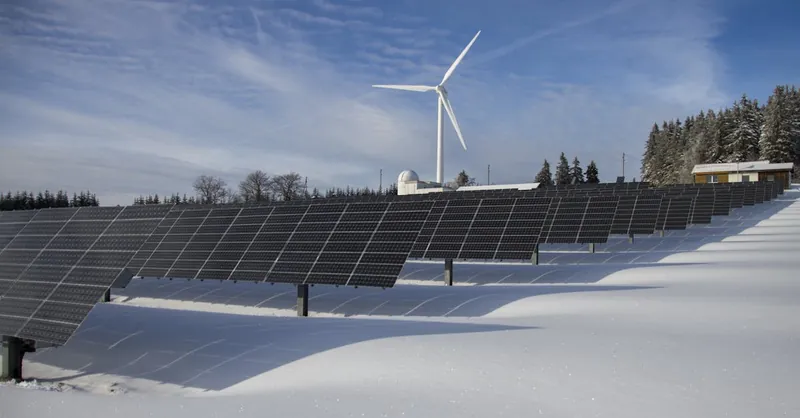
Image courtesy of Pixabay
Cost Analysis and Economic Viability: Wind Energy vs Solar Energy
When comparing wind energy and solar energy, understanding the financial aspects is crucial for assessing project feasibility and long-term sustainability. The cost dynamics revolve around capital expenditure (CapEx), operational expenditure (OpEx), maintenance costs, and the levelized cost of energy (LCOE), which collectively determine the economic viability of each technology under various deployment scenarios.
Capital Expenditure (CapEx)
-
Wind Energy: Wind projects typically have high upfront costs driven by the expense of turbines, foundations, and grid interconnection. Utility-scale wind farms often require significant investment in site preparation and infrastructure to support large-scale turbine installations. The increasing use of taller turbines with larger rotors can raise CapEx but improves energy capture efficiency and capacity factor. Offshore wind projects carry even higher CapEx due to complex marine logistics and specialized installation vessels.
-
Solar Energy: Solar PV systems generally have lower CapEx per megawatt installed relative to wind, especially for utility-scale ground-mounted installations. Declining costs of photovoltaic modules and balance-of-system components, coupled with streamlined manufacturing, have dramatically reduced solar project CapEx over the past decade. While residential and commercial rooftop solar may involve additional costs for integration and structural modifications, large-scale solar farms benefit from economies of scale.
Operational Expenditure (OpEx) and Maintenance Costs
-
Wind Turbines: Wind farms encounter relatively higher OpEx due to the mechanical complexity of turbines, which include gearboxes, pitch control systems, and bearings requiring regular inspection and occasional replacement. Preventative maintenance, condition monitoring, and repair of wear-prone components can significantly impact operational budgets. Offshore wind incurs elevated OpEx related to accessibility challenges and harsher environmental conditions.
-
Solar Panels: Solar PV systems enjoy lower OpEx as they have no moving parts and minimal routine maintenance requirements—mainly periodic cleaning and inverter servicing. While inverter replacements typically occur every 10–15 years, the long lifespan of solar panels (often 25+ years) helps keep operational costs comparatively low.
Levelized Cost of Energy (LCOE)
The LCOE metric provides a comprehensive view of the average cost per unit of electricity generated throughout a project’s lifetime, accounting for CapEx, OpEx, maintenance, financing, and expected energy output. According to recent industry analyses:
| Technology | Typical LCOE Range (USD/MWh) | Key Influencing Factors |
|---|---|---|
| Onshore Wind | $30 - $60 | Site wind quality, turbine size, financing |
| Offshore Wind | $60 - $120 | Installation complexity, marine conditions |
| Utility Solar | $20 - $50 | Solar irradiance, panel efficiency, scale |
| Residential Solar | $80 - $150 | Installation costs, financing, incentives |
Several trends influence these costs:
- Technological Improvements: Advances in turbine design and materials as well as higher-efficiency solar cells continue to drive down LCOE for both renewables.
- Capacity Factor Enhancements: Higher capacity factors reduce LCOE by increasing lifetime energy output without proportional cost increases.
- Financing and Policy Incentives: Favorable financing terms and government subsidies significantly affect economic viability and investment attractiveness.
Economic Considerations for Project Selection
Deciding between wind and solar energy solutions requires balancing cost factors with local resource availability, infrastructure, and grid integration complexity. Wind’s higher CapEx and OpEx may be justified in regions with consistent, strong winds, while solar’s lower costs and scalability make it appealing across diverse climates and scales. Additionally, combining both resources in hybrid systems can optimize economics by smoothing variability and enhancing overall utilization.
In essence, a detailed cost-benefit analysis that incorporates site-specific data, technology advancements, and evolving market conditions is imperative to harness the full economic potential of wind and solar energy projects.
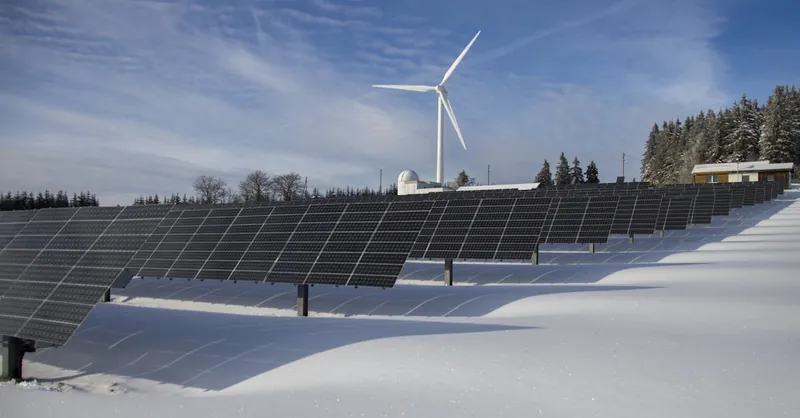
Image courtesy of Pixabay
Environmental Impact and Land Use Considerations: Wind Energy vs Solar Energy
When evaluating wind energy and solar energy, understanding their environmental footprints and land use implications is crucial for responsible deployment and sustainable development. Both technologies contribute significantly to reducing carbon emissions but differ in their ecological impacts, resource consumption, noise generation, visual footprint, and end-of-life material management.
Ecological Footprint and Land Use
-
Wind Energy installations typically require sizeable land areas to maintain optimal turbine spacing for aerodynamic efficiency and minimize wake effects. However, the actual ground disturbance is relatively small since the turbines occupy only a fraction of the total site, allowing much of the land to remain usable for agriculture or natural habitats. Despite this advantage, wind farms can affect avian and bat populations due to collision risks, especially in migratory corridors. Careful site assessment and turbine placement mitigate these ecological concerns. Offshore wind projects have distinct marine ecosystem impacts, including noise during installation and potential habitat disruption.
-
Solar Energy deployment, especially ground-mounted utility-scale solar farms, involves converting large land parcels into arrays of panels, which can impact native vegetation and soil quality. The impervious surface coverage can affect water runoff and habitat connectivity. However, dual-use practices such as agrivoltaics—combining solar arrays with agricultural activities—are emerging to minimize land conflicts. Rooftop and urban solar installations circumvent land use issues entirely by utilizing pre-existing structures.
Noise and Visual Impact
-
Wind turbines generate mechanical and aerodynamic noise, which can be a significant consideration near populated areas. Advances in blade design and operational strategies aim to reduce low-frequency noise and blade pass sounds. Visually, turbines are large and conspicuous structures that alter natural landscapes, potentially affecting local perceptions and property values.
-
Solar panels operate silently, presenting a distinct advantage over wind in noise-sensitive environments. Their visual impact is generally less intrusive but can still generate aesthetic concerns depending on scale, installation location, and panel reflectivity.
Resource Consumption and Recycling Potential
Both wind and solar technologies require materials with energy-intensive manufacturing processes, including metals like steel, aluminum, copper, and rare earth elements for wind turbines, and silicon, silver, and other semiconductors for solar panels. Responsible sourcing and advances in material efficiency are critical to reducing the embodied energy and environmental impacts.
End-of-life management is gaining focus:
-
Wind turbine components such as blades pose recycling challenges due to composite materials, but emerging mechanical and chemical recycling technologies are improving blade recyclability. Metals and generators are highly recyclable.
-
Solar PV panels have lifespans of 25-30 years, after which recycling programs recover valuable semiconductor materials and glass. Research into circular economy models and second-life applications for panels is driving innovation to reduce photovoltaic waste.
Balancing these environmental factors alongside energy yield and economic viability is essential for optimizing wind and solar projects. Advances in eco-friendly materials, wildlife-friendly turbine designs, and land-integrated solar solutions promise to mitigate ecological impacts while scaling renewable energy capacity sustainably.
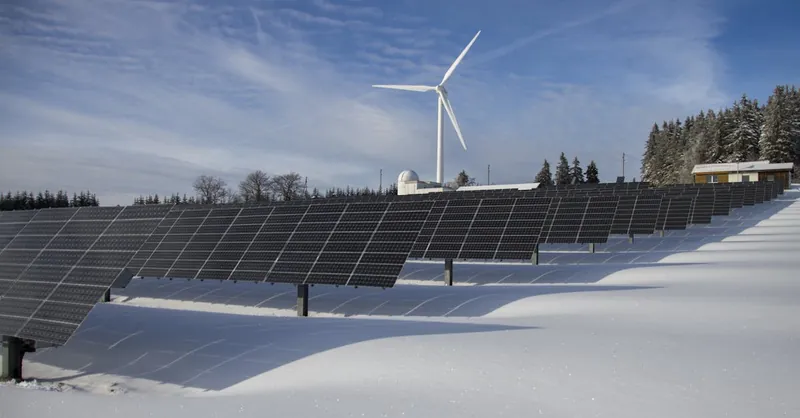
Image courtesy of Pixabay
Grid Integration Challenges and Energy Storage Solutions
Both wind energy and solar energy face inherent challenges related to their intermittency and variability, which can complicate grid integration and affect overall power system stability. Unlike conventional power plants that provide steady, controllable output, renewable sources depend heavily on fluctuating natural conditions—wind speeds vary with weather patterns and time of day, while solar output is limited to daylight hours and influenced by cloud cover. This variability introduces complexities in maintaining grid frequency, voltage stability, and load balancing, especially as renewable penetration increases on electric grids.
Intermittency and Variability Concerns
- Intermittency: Neither wind nor solar delivers constant power; sudden drops in wind or passing clouds can cause rapid generation fluctuations. These changes can lead to power quality issues and require flexible grid operations to avoid blackouts.
- Predictability: Although solar output follows a predictable daily cycle, its dependence on weather can cause unexpected dips. Wind, however, is more stochastic and less predictable, complicating scheduling and dispatch.
- Geographic and Seasonal Effects: Regional disparities in resource availability lead to mismatched supply peaks; for example, wind may peak at night while solar peaks during midday, affecting coordinated grid utilization.
Emerging Energy Storage and Hybrid Systems
To address these challenges, energy storage technologies and hybrid renewable systems are critical innovations enabling reliable grid integration of wind and solar power:
- Battery Energy Storage Systems (BESS): Lithium-ion batteries dominate current large-scale storage, providing fast-response energy buffering to smooth out fluctuations, enhance grid resilience, and shift surplus generation to peak demand times. Advancements in battery chemistries and scale are rapidly decreasing costs and expanding deployment.
- Pumped Hydro and Compressed Air Energy Storage: These mature technologies offer large capacity storage for long-duration energy arbitrage, stabilizing grids over hours to days but are geographically limited.
- Thermal and Hydrogen Storage: Emerging solutions like concentrated solar power with molten salt and power-to-gas hydrogen production enable seasonal storage and integration with other energy sectors.
- Hybrid Renewable Systems: Combining wind and solar generation with complementary output profiles can reduce overall variability. Coupling these systems with storage creates hybrid power plants that deliver more consistent, dispatchable electricity.
- Advanced Grid Management and Demand Response: Intelligent control systems, forecasting algorithms, and flexible demand-side participation optimize renewable integration by anticipating variability and dynamically adjusting loads.
Effective integration of energy storage and hybrid solutions mitigates the intermittency of wind and solar, supporting grid stability, improving capacity utilization, and accelerating the transition to a low-carbon energy future. Understanding these system-level innovations is essential for engineers designing resilient renewable energy infrastructures.
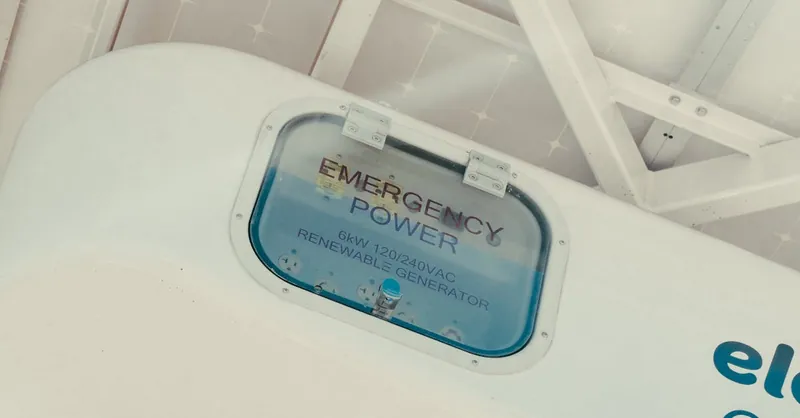
Image courtesy of Kindel Media
Technological Innovations Driving Future Prospects
The future of wind and solar energy is being propelled by remarkable technological innovations that promise to enhance efficiency, expand deployment possibilities, and reduce costs, reshaping the renewable energy landscape. These breakthroughs address key challenges such as resource variability, material limitations, and integration complexity, creating new opportunities for both large-scale utilities and distributed generation.
Advanced Turbine Materials and Designs
In wind energy, the development of lightweight, high-strength composite materials is revolutionizing turbine blade manufacturing. These materials allow for longer blades with improved aerodynamic profiles without compromising structural integrity, enabling turbines to capture more wind energy even at lower speeds. Innovations such as carbon fiber reinforcements and adaptive blade morphing technologies improve blade durability and optimize performance in diverse wind conditions. Furthermore, the advent of floating offshore wind turbines overcomes traditional depth limitations, unlocking vast, untapped wind resources in deepwater locations and enabling deployment closer to demand centers.
Breakthroughs in Solar Photovoltaics
Solar energy is witnessing rapid evolution through novel materials and panel configurations that increase power output and versatility. Bifacial solar panels, which capture sunlight on both their front and rear surfaces, boost energy yield by 10-20%, especially when installed over reflective surfaces like snow or light-colored ground. Simultaneously, perovskite solar cells are emerging as a disruptive technology, with high efficiency potential and low-cost fabrication processes. When combined in tandem architectures with traditional silicon cells, perovskites can surpass single-junction efficiency limits, pushing solar conversion efficiency beyond 30% in laboratory settings. This innovation could lead to cheaper, more efficient panels accessible across a variety of applications.
Smart Energy Management and Integration Systems
Complementing advances in hardware are breakthroughs in smart energy management systems that optimize renewable generation and grid interaction. Utilizing sophisticated algorithms, IoT connectivity, and real-time data analytics, these systems forecast resource availability, dynamically control output, and coordinate distributed energy assets to maximize reliability and economic benefits. Innovations include artificial intelligence-based predictive maintenance for wind turbines, adaptive maximum power point tracking (MPPT) for solar inverters, and integrated platforms combining wind, solar, and storage for seamless dispatch. These intelligent controls not only improve system efficiency but also enhance grid stability amid increasing renewable penetration.
Together, these technological innovations underscore a transformative era for wind and solar energy, driving toward higher efficiency, greater adaptability, and more sustainable integration into global energy systems. As these advancements mature, they will be critical in determining the evolving balance between wind and solar power in the renewable energy portfolio.
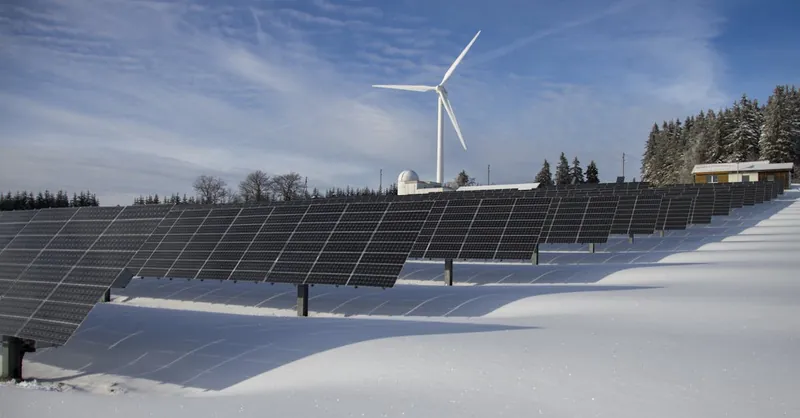
Image courtesy of Pixabay
Applications and Suitability: From Distributed Systems to Utility-Scale
Understanding how wind energy and solar energy fit various application scales and environments is essential for aligning technology choice with project requirements—whether residential rooftops, commercial installations, rural off-grid setups, or expansive utility-scale power plants. Each renewable technology exhibits unique strengths that influence its suitability across different contexts, driven by resource availability, infrastructure demands, and system complexity.
Residential and Distributed Energy Systems
- Solar Energy is the go-to solution for residential and small commercial applications due to its modularity, ease of installation, and declining costs. Rooftop photovoltaic (PV) panels integrate seamlessly with home electrical systems, offering daytime electricity generation and potential for net metering. Solar systems can often be paired with battery storage to provide backup power and load shifting, increasing energy independence.
- Wind Energy in residential contexts typically requires suitable local wind conditions and space for turbine installation, which can be restrictive in urban or suburban environments. Small-scale wind turbines can complement solar in some rural or off-grid scenarios but usually require detailed wind resource assessments to ensure economic viability.
Rural, Remote, and Off-Grid Applications
- In remote or off-grid locations, solar’s scalability and minimal moving parts make it highly attractive for providing reliable power where grid extension is cost-prohibitive. Solar microgrids and standalone PV systems support lighting, communication, and essential appliances with limited maintenance needs.
- Small and medium-sized wind turbines can be effective in rural areas with strong, consistent wind regimes, often integrated within hybrid systems combining solar PV and diesel generators for improved reliability. Wind’s ability to generate power during nighttime and cloudy periods complements solar’s diurnal pattern, optimizing overall energy availability.
Commercial and Industrial Use Cases
- Commercial solar installations on flat rooftops and parking canopies capture significant solar resource while minimizing land use conflicts. These systems help businesses reduce electricity costs and carbon footprints and often leverage financial incentives or renewable energy credits.
- Industrial-scale wind farms are increasingly common where landscape and wind resource neccessitate large-scale power generation. Wind’s capacity to deliver higher capacity factors makes it favorable for companies seeking long-term, predictable renewable power supply via power purchase agreements (PPAs).
Utility-Scale Deployment
- Utility-scale solar farms excel in sun-rich regions with ample flat land, delivering peak power during daylight hours that align with daytime demand peaks, especially in commercial grids. Their rapid deployment timelines and predictable output make them a mainstay in renewable energy portfolios worldwide.
- Utility-scale wind farms are ideal for regions featuring strong, persistent wind corridors such as coastal plains, mountain passes, and offshore locations. Wind power’s higher capacity factor compared to solar often translates to greater annual energy production per unit capacity, supporting baseload renewable integration when paired with grid flexibility and energy storage.
Hybrid Systems: Combining Strengths for Enhanced Reliability
Integrating wind and solar resources into hybrid renewable energy systems combines complementary availability profiles—solar generation peaks during sunny hours, while wind resources often increase at night or during different seasons. Hybrid systems, often coupled with battery or other storage technologies, provide:
- Increased energy reliability and predictability, mitigating single-resource intermittency.
- Improved capacity factors and utilization rates, maximizing asset productivity.
- Flexible deployment options, adaptable across urban, rural, and remote applications.
Ultimately, selecting between wind and solar—or strategically combining them—depends on a thorough analysis of site-specific resource assessments, project scale, economic parameters, and system integration objectives. For engineers and project developers, mastering these nuanced considerations is key to unlocking optimal renewable energy solutions tailored to diverse energy demands and environmental conditions.

Image courtesy of Kelly
Regional and Climatic Influences on Performance and Deployment
The performance and deployment potential of wind and solar energy technologies are deeply influenced by regional and climatic factors such as latitude, climate zones, terrain features, and seasonal variations. Understanding these influences is essential for optimizing technology selection, system design, and expected energy output in diverse geographic contexts.
Latitude and Solar Resource Availability
Latitude strongly affects solar irradiance intensity and duration, with equatorial regions receiving higher and more consistent sunlight year-round compared to higher latitudes. This geographic factor influences:
- Solar panel output: Locations near the equator benefit from more direct sunlight angles and longer daylight hours throughout the year, increasing PV system efficiency and capacity factors.
- Seasonal variability: In higher latitudes, solar power production varies significantly between summer and winter months, necessitating design adaptations such as adjustable panel tilt angles or supplemental energy sources to smooth supply gaps.
- Optimal panel orientation: North–south orientation and tilt angles need to be region-specific to maximize sunlight capture, factoring in local solar path trajectories.
Climate Impacts on Wind and Solar Efficiency
- Wind Energy performance hinges on region-specific climate patterns such as prevailing wind directions, seasonal wind regimes, and atmospheric stability. Coastal and open plain areas often experience stronger, more consistent winds than inland or mountainous regions, where complex terrain can cause turbulence and variability.
- Solar Energy output is sensitive to climatic factors like cloud cover, humidity, and temperature. High humidity and frequent overcast conditions reduce incident solar radiation, lowering panel efficiency. In contrast, arid regions with clear skies deliver superior solar resource potential. However, elevated temperatures, common in deserts, may reduce PV efficiency due to heat-related performance degradation.
Terrain and Local Geographic Features
- Terrain roughness and obstacles critically affect wind turbine placement and energy capture. Flat, open landscapes enable smoother wind flow and less mechanical stress on turbines, translating into higher capacity factors. Conversely, complex terrain, including hills and forested areas, can cause wind shear, turbulence, and eddies that challenge turbine operation and longevity.
- Solar panel deployment is generally favored on flat or gently sloped surfaces that maximize sun exposure. Steep or shaded terrains complicate installation and reduce energy yield, often increasing balance-of-system costs related to mounting and wiring.
Regional Considerations for Technology Deployment
- High latitude/high cloud cover regions like Northern Europe or parts of Canada may lean toward wind energy due to reduced solar insolation but consistent wind resources, especially offshore.
- Tropical and subtropical regions with abundant sunlight but less reliable wind regimes commonly prioritize solar PV solutions, leveraging high irradiance and lower temperatures for optimal performance.
- Coastal and offshore environments offer lucrative wind resources with reduced land use conflicts but impose higher logistical and capital expenses; integration with solar can improve overall renewable portfolio resilience.
- Arid and desert regions excel for utility-scale solar farms due to high irradiance, while wind energy deployment depends on local topography and wind resource assessments.
Harnessing comprehensive meteorological data, site-specific climate models, and terrain analysis are indispensable steps for engineers and developers to maximize the energy yield, economic viability, and lifespan of renewable energy systems. Tailoring technology choice and design to regional and climatic realities ensures that wind and solar installations contribute reliably and efficiently within their environmental context.
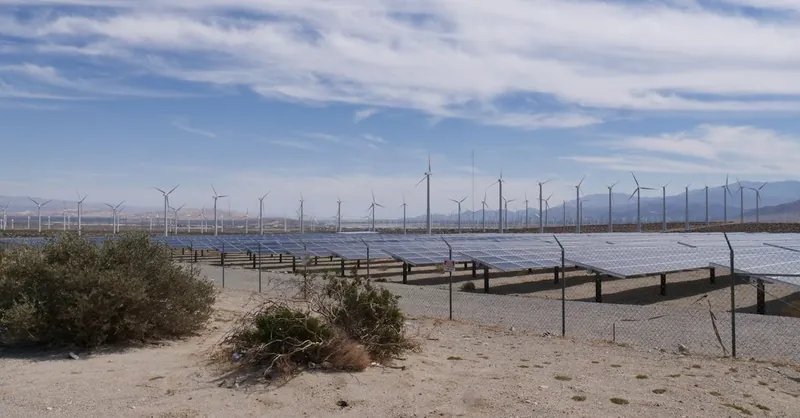
Image courtesy of Kindel Media
Policy, Incentives, and Market Trends Influencing Adoption
The global adoption of wind and solar energy is profoundly shaped by evolving policy frameworks, government incentives, and market dynamics, which collectively steer investment flows and technological deployment. Understanding these influences is essential for both beginners and electrical engineers aiming to navigate or contribute to the renewable energy sector effectively.
Global Policy Frameworks and Regulatory Drivers
Countries worldwide are setting ambitious renewable energy targets and implementing policies to accelerate decarbonization and energy security. Key regulatory mechanisms shaping wind and solar investments include:
- Renewable Portfolio Standards (RPS) and Quotas: Mandates requiring utilities to source a certain percentage of electricity from renewables create direct demand for wind and solar projects. Jurisdictions with aggressive RPS levels typically witness faster capacity growth and technology innovation.
- Carbon Pricing and Emission Trading Systems (ETS): By assigning a cost to carbon emissions, these policies improve the economic competitiveness of clean energy sources, favoring renewables over fossil fuels. Wind and solar projects gain a distinct market advantage wherever carbon costs internalize environmental externalities.
- Grid Access and Interconnection Regulations: Streamlined permitting and standardized grid codes reduce barriers for renewable integration, encouraging investment. Conversely, regulatory uncertainty or restrictive grid policies can slow deployment and inflate project costs.
Financial Incentives and Subsidies
Government subsidies remain a cornerstone in scaling renewable energy, directly impacting wind and solar affordability and investor confidence. Prominent incentive types include:
- Feed-in Tariffs (FiTs): Fixed payments per kWh generated from renewables provide revenue certainty and encourage early-stage investments, historically pivotal in both wind and solar market maturation.
- Investment Tax Credits (ITCs) and Production Tax Credits (PTCs): Common in markets like the United States, these tax benefits lower upfront or ongoing costs, substantially improving project financial models. ITCs have predominantly aided solar PV expansion, while PTCs have driven wind capacity growth.
- Grants and Low-interest Loans: Public financing options reduce capital barriers and support innovative technologies, including offshore wind and advanced PV materials.
- Auction and Tender Systems: Competitive bidding mechanisms have become prevalent globally, driving down costs through market efficiency and transparency by awarding contracts to lowest-cost renewable providers.
Market Trends Influencing Wind and Solar Deployment
Market dynamics, intertwined with policy incentives, play a critical role in shaping renewable energy portfolios:
- Falling Technology Costs: Continuous declines in wind turbine and solar panel manufacturing costs—driven by economies of scale, improved supply chains, and innovation—are transforming project economics favorably. This trend shifts policy focus from subsidies toward enabling market competitiveness and grid readiness.
- Corporate Renewable Procurement: Increasing corporate commitments to 100% renewable energy through Power Purchase Agreements (PPAs) is accelerating wind and solar installations worldwide, with diverse geographic footprints and temporal profiles.
- Hybrid and Sector-Coupled Solutions: Policies promoting multi-technology integration—combining wind, solar, storage, and demand-response—are influencing investment allocation by optimizing energy reliability and cost.
- Emerging Markets and Decentralization: Many developing regions are leapfrogging centralized fossil infrastructure by prioritizing distributed solar and small-scale wind, supported by tailored policies that emphasize energy access and local economic development.
The interplay between policy, incentives, and market forces continuously reshapes the competitive landscape for wind versus solar energy. Navigating this complex ecosystem requires staying informed on regulatory changes, emerging financial mechanisms, and shifting market preferences—critical knowledge for stakeholders aiming to optimize renewable energy investments and engineering approaches globally.
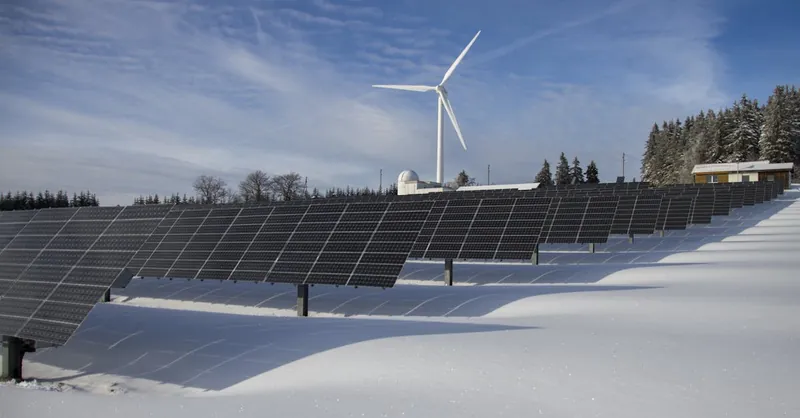
Image courtesy of Pixabay
